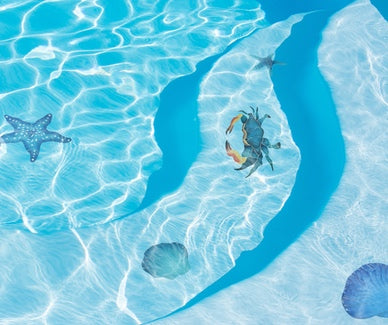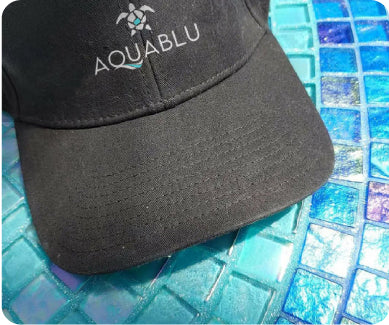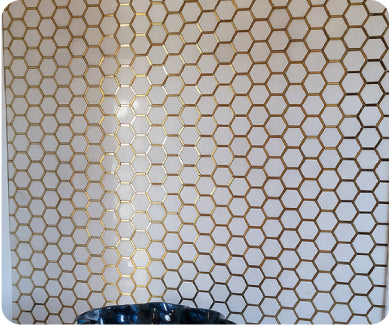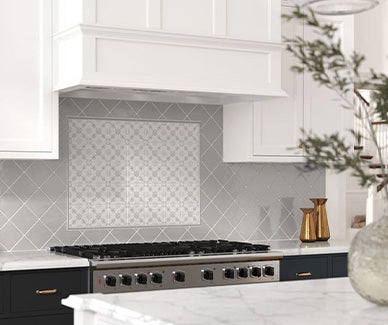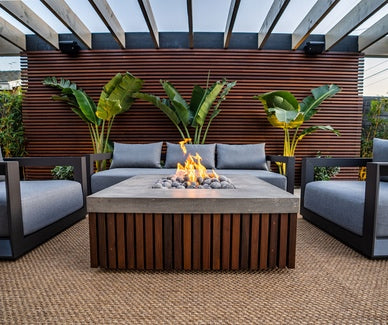Waterproofing: An Essential Step in Assuring the Health of Your Swimming Pool

It may not be as sexy as picking out glass tile or as fun as selecting a mermaid pool mosaic, but waterproofing the cement foundation of your pool is an important process that needs to be done right to save you money and sleepless nights down the road.
Something that isn’t discussed much in the building or refurbishing stage is that yes, pools can leak. That’s because concrete is a porous substrate prone to water penetration so it has to be sealed to keep water in the pool--in addition to keeping ground water out.
Every single swimming pool or water feature needs to be waterproofed in one way or another. Sometimes these structures present challenges and are often tricky to waterproof due to the various penetrations included in the design to accommodate elements such as lighting, piping and drainage.
Efflorescence is probably the most common and widespread symptom of what happens when you leave out the waterproofing. As concrete travels or migrates through concrete it dissolves lime and other elements that make up the concrete. These elements are then deposited on the surface of the concrete as the water evaporates from the surface of the concrete.
This phenomenon is typically seen on raised spas and overflow walls.
Stains or discoloration of pool plaster occur when water travels through the concrete structure from the outside. Trace deposits of dissolved elements left behind by the passage of water is the culprit. Delamination and or cracking of pool plaster shortly after its application can frequently be attributed to the lack of waterproofing.
There are several products on the market today for waterproofing swimming pools. The product you select is just as important as the waterproofing step itself.
Basically you will find two types of waterproofing products for cement pools:
- Cementitious coats and waterproof barrier products
- Pure polymer waterproof coating
Most industry professionals agree that the cementitious coating and waterproof barrier products tend to bond better to concrete substrates because they are similar in chemical composition and enhanced by polymer bonding agents.
Cementitious coats and waterproof barrier products also allow various finishing options such as plaster, overlays and adhesives to attach better to cementitious substrates.
Both new pools and swimming pools in restoration benefit from cementitious coating and waterproof barrier products. This is due to cementitious coatings not being susceptible to failure from moisture vapor transmission (MVT), which is the rate at which water vapor passes through a material at a specified temperature and relative humidity.
These coatings are breathable. They bond with the free calcium and lime within the concrete, transforming into a dense waterproof barrier of colloidal silicate gel. Allowing the concrete to “breathe” is important so vapors from within the concrete can escape.
This characteristic also allows the coatings to be applied just days after pouring the concrete or placing the gunite, which results in faster turn around times. In contrast, pure polymer systems require the concrete to cure for a minimum of 28 days to prevent failure from MVT.
Similar story with swimming pool restoration projects. It is difficult for contractors to completely dry the substrate before waterproofing is applied. Pure polymer coating systems cannot be applied to substrates that are not completely dry, whereas cementitious products are moisture tolerant. In fact, many manufacturers even require pre-wetting the substrate before application.
AquaBlu offers two highly rated products for waterproofing: Basecrete – Flexible Waterproofing Bondcoat Kit and Basecrete Plus – Primary Waterproofing. The manufacturer recommends using both products together for a complete waterproofing system in swimming pools, spas, fountains and other wet area applications.
Here’s the rundown:
Basecrete Plus – Primary Waterproofing
Basecrete Plus is usually applied in two coats with a low-pressure pump-type sprayer. It’s important to apply the coats in quick succession, removing excess material immediately. Any excess material that remains must not be permitted to dry on the surface. Normally a five gallon pail of Basecrete Plus covers 500 to 700 square feet pending the porosity of the concrete.
Made in the good old U.S., Basecrete Plus benefits include:
- Reduces rust formation on rebar
- Exfoliates entrapped salts
- Densities and strengthens concrete
- Control hydration of new concrete
- Reduces ASR (alkali silica reactivity)
- Accelerates curing time
Basecrete – Flexible Waterproofing Bondcoat Kit
Basecrete Bondcoat receives high marks for waterproofing pool repairs as well as protecting and waterproofing concrete structures such as pools, spas, fountains and even commercial areas like factory floors and parking lots. Two coats are strongly recommended for the most effective waterproofing application. Each Bondcoat Kit covers 450 square feet.
Also made in the U.S., Basecrete Bondcoat’s benefits include:
- Easy application: Basecrete Bondcoat can be sprayed on, rolled on, troweled on or squeegeed on.
- Basecrete Bondcoat is rated high performance in tensile strength, shear bond, flexibility, adhesion and PSI.
Basecrete Bondcoat comes in gray, white or black.
Waterproofing Tips
When selecting a waterproof coating, keep the project at hand in mind. Vinyl-lined pools, for example, can be more difficult to work with if they have a non-standard shape. Larger surface areas, however, can be covered more economically by using spray equipment, as opposed to applying via a trowel or brush.
For swimming pool waterproofing solutions to be effective and long lasting, it is crucial to pay thorough attention before their application. It is important to start with a careful substrate preparation. Then, check that there are no crumbly parts or substances that could compromise the adhesion of the coating, and perfectly seal all the elements that might “interrupt” the linearity of the surfaces.
Never consider painting as a protective waterproofing layer.
A proper waterproofing system should be resistant to both positive and negative water pressure, resistant to changes of temperature and resistant to the acidity and alkali (pH) in water.
-------------
Want to know more about waterproofing a concrete foundation? Or maybe there’s something else on your mind. Talk to one of our experts. You can call us at (800) 971-1442 or fill out our contact form. You can visit our website at https://www.aquablumosaics.com/.



























